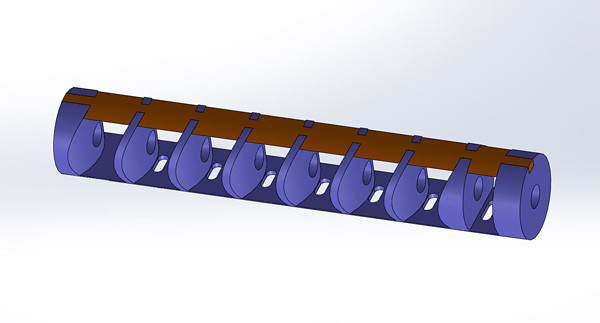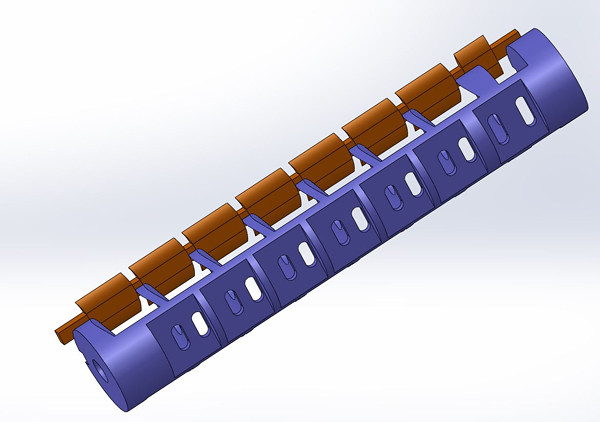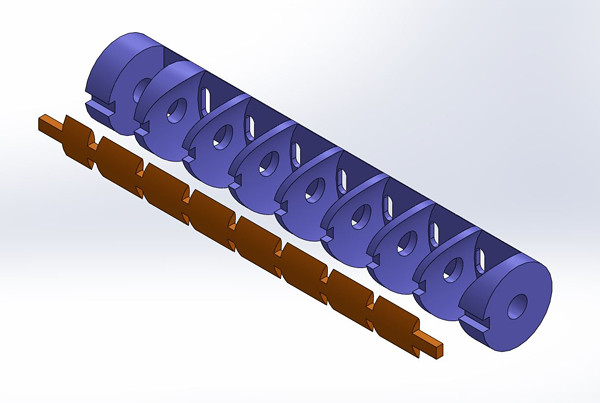Page 1 of 1
And now for something completely different....
Posted: Fri Mar 17, 2017 5:05 am
by Timbertec
Couldn't sleep so decided to break open CAD and see what my brain could do differently...
It's not quite a monocore, not a baffle stack - I'm not sure what I'd call "it". It basically a two piece core design with a stabilization "Spine" to keep the "Baffle faces" in alignment. Gas is dumped from one chamber to the next & from the front of the baffle to the rear of that same baffle for a right angle "jet" across the bore. Would it work? That's for you to decide!
This is just a solid model and only exists in my computers memory... I just wanted to see what the "
Experts" would say.



Re: And now for something completely different....
Posted: Fri Mar 17, 2017 7:24 am
by fishman
I can't see the pictures
Re: And now for something completely different....
Posted: Fri Mar 17, 2017 7:25 am
by Timbertec
fixing now... stupid dropbox
Re: And now for something completely different....
Posted: Fri Mar 17, 2017 9:11 am
by bakerjw
Very good looking design. Hope you investigated patenting it.
Re: And now for something completely different....
Posted: Fri Mar 17, 2017 1:56 pm
by alordnapa
Its a very unique design, but what are the advantages over an identical symmetrical, monocore? Do you have some easier method of production to enable this versus a monocore?I am sure the dogs of war here will tell you to make it less symmetrical to dirty up the laminar flow, but I bet it would work just fine.
Re: And now for something completely different....
Posted: Fri Mar 17, 2017 4:40 pm
by a_canadian
I don't see that supporting splined fitting getting any easier to reinstall in the long run, quite the opposite most likely. Perhaps if the engagement wasn't a lot of tight little square corners it'd work better with the inevitable fouling and wear... but if sticking with something like this design I'd switch to a wave form engagement, something which is easier to mill as well as easier to push together after cleaning with perhaps less than perfect alignment and surface smoothness.
As for efficiency... I'm not sure that a lot of pressure would be able to go back into the main chambers through those holes along one side and generate much cross-bore flow. Seems more likely to be a very small scale trap for some of the pressure, but that main bore pressure is going to keep it in check against flowing back in. Where's the motivation for creating cross-bore flow? A K baffle or some cone baffle jetting cuts take advantage of their immediate proximity to the main flow in generating a strongly redirected flow element. That doesn't seem to be present in this case.
Re: And now for something completely different....
Posted: Fri Mar 17, 2017 8:02 pm
by Timbertec
a_canadian wrote:I don't see that supporting splined fitting getting any easier to reinstall in the long run, quite the opposite most likely. Perhaps if the engagement wasn't a lot of tight little square corners it'd work better with the inevitable fouling and wear... but if sticking with something like this design I'd switch to a wave form engagement, something which is easier to mill as well as easier to push together after cleaning with perhaps less than perfect alignment and surface smoothness.
As for efficiency... I'm not sure that a lot of pressure would be able to go back into the main chambers through those holes along one side and generate much cross-bore flow. Seems more likely to be a very small scale trap for some of the pressure, but that main bore pressure is going to keep it in check against flowing back in. Where's the motivation for creating cross-bore flow? A K baffle or some cone baffle jetting cuts take advantage of their immediate proximity to the main flow in generating a strongly redirected flow element. That doesn't seem to be present in this case.
Actually the milling should be fairly easy in this design since you'd cut the small chambers on for the underside and then flip the whole thing 180 degrees in the mill to pound the large chambers out (via CNC) of course you'd need to make a jig to hold the part.
For efficiency - who knows - I'm not going to get a chance to build it any time soon due to location. It was just a practice in "Outside the box thinking"





